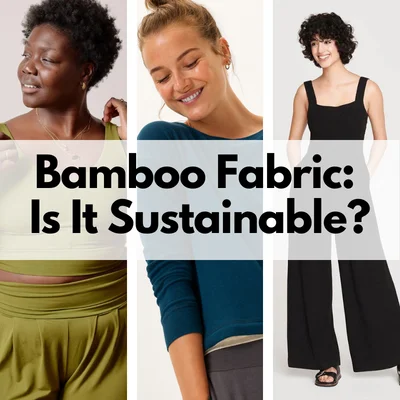Free Tips On Deciding On Bamboo Clothing
Wiki Article
What Makes Hemp Sturdy And Stronger, As Well As More Regenerable?
Hemp is thought to be more biodegradable due to its inherent properties and the method in which hemp is cultivated. Here's why- Biodegradability-
Natural FiberNatural Fiber Hemp is a natural plant fiber and its fibers are biodegradable. Clothing and textiles made from hemp break down over time. The waste is returned to the earth, without permanent effects. It is a striking contrast to synthetic fibers such as polyester, which take many years to degrade.
Hemp textiles are free of synthetic additives and chemical treatments which may affect biodegradability. The textiles made of cotton can be treated using synthetic chemical additives, such as certain finishings or dyes which can slow biodegradation.
Durability-
Fiber Strength Hemp fibers are renowned for their strength and durability. Hemp clothing, textiles, and other products are more robust than cotton. That means hemp clothes will last longer, even before it starts to show indications of wear and wear and tear.
Hemp fabric is less prone to pilling than cotton. This feature contributes greatly to the durability and quality of hemp fabrics.
Regenerative Agriculture-
Soil Health Hemp cultivating can be an effective regenerative process when done sustainably. Hemp has deep roots which helps to keep soil from compaction and erosion, and it can enhance soil health by aerating soil and encouraging the activity of microbial. This regenerative element helps keep the soil in better shape for the future growth of crops.
Low environmental impact - Sustainable hemp cultivating methods involve the use of only a few pesticides. Cotton farming is a conventional method that may result in soil degradation as well as water pollution, among other environmental problems due chemical use in synthetic forms.
Water Efficiency-
Hemp generally requires less water to grow than cotton. Its drought-resistant characteristics mean that it thrives even without irrigation or in rain-fed environments. This makes it a efficient use of water, particularly in areas that have limited water resources.
Hemp can be incorporated into crop rotations, which improve soil health and reduces the possibility of soil diseases and depletion. The practice of crop rotation in the cotton industry isn't as common.
Hemp is a flexible material which can be utilized to a number of different items, including building materials, clothing, textiles and paper. Hemp is grown in many ways such as sustainable and regenerative.
Although hemp has numerous advantages however, it is crucial to be aware that cotton and hemp can both be produced in a sustainable or unsustainable way, depending on the methods of farming and processing. It is preferential to purchase hemp products made with eco-friendly and ethical methods. This can maximize the environmental benefits of hemp. Organic cotton products are an effective way to lessen the impact on the environment of cotton products that are conventional. Read the most popular hemp clothes examples for more advice including patagonia hemp pants, patagonia hemp work pants, patagonia hemp overalls, hemp shirts wholesale, hemp textiles, hemp garments, hemp textiles, hemp baja hoodie, nomad hemp wear, patagonia work pants hemp and more.

What Are The Advantages Of Hemp Fibers When It Comes To Carbon Sequestration?
Hemp fibers are a green choice in textile and agriculture production. They are beneficial for the sequestration of carbon and sustainability.
Hemp grows quickly, maturing between 70 and 120 days, based on its type and growth conditions. As part of photosynthesis, hemp plants absorb the CO2 from the atmosphere during their rapid growth. The carbon uptake process is able to dramatically reduce CO2 levels by sequestering it.
The hemp's capacity for high biomass production is well-known. The plant's tall stalks and dense foliage create a substantial quantity of organic matter. When incorporated in soil, or used to make various products, can help to build up of carbon.
Sustainability:
Minimal Chemical Use- Hemp cultivation often requires fewer synthetic pesticides and herbicides compared to some other crops such as cotton. The hemp's natural resistance to numerous diseases, pests and weeds reduces the use of chemical treatments. Organic hemp farming, in particular, emphasizes sustainable agriculture by avoiding synthetic chemical substances.
Hemp is relatively water efficient and is able to grow without much irrigation. This makes it a more sustainable plant in regions where water resources are limited. Therefore, it is more sustainable in regions with limited resources of water.
Soil Health- The deep root system can boost the soil's health. The roots of the plant reduce runoff from soil and help stabilize soil structure, which helps prevent soil erosion. Hemp cultivation can also boost the action of microbial organisms in soil. This improves the nutrient cycle and overall soil fertilty.
Hemp can be incorporated in crop rotation systems. Crop rotation is a technique that involves rotating several crops in the same area. It is a wonderful way to interrupt the cycle of pests, improve soil quality, and lessen soil depletion. Hemp is a great crop to rotate and its role contributes to sustainable farming.
Crop Rotation
Hemp plants can be rotated with other crops including grains, legumes and vegetables. Diversification assists farmers in maintaining the health of their soil and also reduce diseases and pests. It also helps to maintain balanced nutrition cycles.
The deep roots of hemp can penetrate the soil to improve aeration and reduce compaction. It also increases the amount of water that is absorbed. The improved soil structure following a hemp crop benefits the subsequent crop.
In short, hemp fibers enhance carbon storage, sustainability, and cultivation practices because of their rapid expansion and production of biomass. They also require a minimum of chemicals, have an efficient utilization of water, and can be used in conjunction with crop rotation systems. The hemp fibers that are produced by this sustainable, regenerative farming method are a great choice for textiles. Take a look at the best hemp clothes for more tips including patagonia ranch jacket, patagonia hemp work pants, hemp apparel fabric, hemp pants womens, 100 hemp shirt, nomad hemp wear, patagonia hemp work pants, patagonia hemp pants, hemp clothing near me, dash hemp clothing and more.

What are the differences between Bamboo and hemp fibers?
Hemp and bamboo are two distinct plant-based fibers that are used in textile manufacturing each with their own unique characteristic and characteristics. These are the main differences between hemp and bamboo fibers- 1. Plant Source-
Hemp- Hemp fibers are taken from the stalks of the hemp plant, and specifically the bast fibers that are in the outer layer. Hemp is a versatile and quick-growing plant that has been used for a variety of purposes for many centuries.
Bamboo fibers are made from bamboo pulp. Bamboo is an extremely rapid-growing grass, renowned for its durability and rapid renewal.
2. Fiber Characteristics
Hemp- Hemp fibers are recognized for their durability and strength. They are natural fibers with a lot of strength which soften and become more supple after washing, which makes them ideal for making long-lasting textiles.
Bamboo fibers can be smooth and soft. While they might not be as sturdy as hemp fibers, and are more delicate in certain instances but their softness to the skin is highly valued.
3. Texture & Feel
Hemp- Hemp has a somewhat coarse texture, particularly in its natural form. It's soft and comfortable, however its texture is distinct from bamboo.
Bamboo The bamboo fabric is soft, silky, and luxuriously soft. It is frequently described by those who wear it as a mixture of cotton and silk.
4. Breathability (and moisture-wicking)-
Hemp- Hemp fibers are naturally water-wicking and breathable, which allows air circulation and moisture absorption. They will keep you cool and dry during hot weather.
Bamboo fibers are also highly ventilated. They are moisture-wicking. Micro-gaps within the fabric increase the ability of bamboo to regulate moisture and temperature and allow you to remain comfortable under varying conditions.
5. Environmental Impact-
Hemp Hemp is considered an eco friendly fiber, because of its fast growth, its low need for water and resistance to insects, which means that it is less necessary to apply pesticides. Hemp is also able to sequester carbon from the atmosphere during its expansion.
Bamboo- Bamboo's sustainability is well-known. It is fast growing, requires only a small amount of water, and is able to be grown without synthetic herbicides or pesticides. Some bamboos are regarded as sustainable, including Moso bamboo.
6. Processing-
Hemp- Hemp fibres need extensive processing to separate inner bast fibers from the inner woody core. The processing may include retting, or decortication.
Bamboo- Bamboo fibers can be made by a chemical known as the viscose process. The bamboo pulp is then broken down with chemicals. This process could be harmful for the environment if it is not handled responsibly. However, some bamboo textiles employ closed-loop systems that reduce chemical waste.
7. Versatility-
Hemp- Hemp fibres can be used for a range of purposes, such as clothes, textiles and even paper. They are also great building materials.
Bamboo fibers- Bamboo fibers are mostly used in clothing and textiles but they are also used in some other products like sheets and towels.
Both hemp and bamboo have distinct characteristics and provide sustainable benefits. The choice between them depends on the particular qualities and features you are looking for in a textile product and your environmental preferences. View the most popular bamboo clothes for blog recommendations including bamboo ladies pants, bamboo pants mens, sustainable bamboo clothing, bamboo maternity wear, bamboo twirl dress, bamboo ladies pants, yala pajamas, women's freefly apparel, bamboo activewear, bamboo shirt and more.
